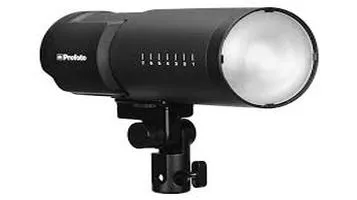Protective Coveralls – A Comprehensive Evaluation
Protective coveralls are specialized garments designed to shield the wearer from environmental hazards, contaminants, and workplace threats. Constructed from durable, often lightweight materials such as polypropylene, Tyvek, or polyethylene, these coveralls offer robust protection against chemical splashes, dust, biological agents, and other dangerous substances. They are essential in various industries, including healthcare, pharmaceuticals, construction, and manufacturing, where exposure to harmful elements is a concern. Protective coveralls typically feature a one-piece design with a front zipper, elasticized cuffs, and sometimes an attached hood, ensuring a secure fit and comprehensive coverage. Available in different levels of protection, they can be disposable or reusable, catering to specific needs and safety standards. These garments prioritize wearer safety while maintaining comfort and ease of movement.

Protective coveralls have become indispensable in numerous industries, from healthcare and pharmaceuticals to construction and chemical manufacturing. They offer a robust barrier against various hazards, including chemical spills, biological agents, and particulate matter. In this review, I will delve into the various aspects of protective coveralls, analyzing their effectiveness, comfort, durability, and overall value.
Effectiveness and Protection
The primary function of protective coveralls is to shield the wearer from hazards. Different industries have distinct requirements, so it's vital to select the appropriate type of coverall. For example, healthcare workers need protection from biological agents, while construction workers might need protection from dust and debris.
Most high-quality protective coveralls are made from materials like Tyvek or other non-woven fabrics. These materials are designed to be impermeable to liquids and particulates, providing a reliable protective barrier. Many coveralls also feature sealed seams to prevent any penetration through stitching lines, enhancing their overall effectiveness.
In my experience, protective coveralls with multiple layers offer the best protection. For instance, coveralls designed for handling hazardous chemicals often have an outer layer resistant to chemical permeation and an inner layer that offers comfort and additional protection. The effectiveness of these coveralls is often validated by rigorous testing and certification, such as ANSI/ISEA or CE certifications, which provide assurance of their protective capabilities.
Comfort and Fit
While protection is paramount, comfort is also a crucial factor, especially for individuals who need to wear coveralls for extended periods. Uncomfortable protective gear can lead to reduced compliance and increased fatigue, ultimately compromising safety.
Modern protective coveralls are designed with ergonomics in mind. Features like elastic waists, wrists, and ankles help ensure a snug fit, which not only enhances protection but also improves mobility. Some coveralls also come with additional features like reinforced knees and gussets, which are particularly beneficial for workers who need to move around a lot or work in various postures.
However, comfort can be subjective and vary from one user to another. Breathability is a common concern, especially in high-temperature environments. Advanced materials and designs, such as those incorporating microporous fabrics, can significantly enhance breathability while maintaining protection. Ventilation panels and moisture-wicking linings are other features that can improve comfort, helping to manage heat and sweat build-up.
Durability and Reusability
Durability is another important aspect to consider, particularly in demanding work environments. Disposable coveralls are suitable for short-term use and environments where contamination is a concern. These are typically made from lightweight materials and are designed for single use, which can be both an advantage and a limitation.
On the other hand, reusable coveralls are made from more robust materials and are designed to withstand multiple uses and wash cycles. These are often more cost-effective in the long run and are better for the environment. However, they require proper maintenance and decontamination procedures to ensure ongoing protection and longevity.
In terms of durability, features like reinforced seams, tear-resistant fabrics, and high-quality zippers can significantly extend the life of protective coveralls. In my experience, investing in durable coveralls often pays off, as they provide consistent protection over time and reduce the frequency of replacements.
Ease of Use
Ease of use is an often-overlooked aspect of protective coveralls. Features like front zippers with storm flaps, easy-to-tear seams for quick removal, and integrated hoods and boot covers can make a significant difference in user experience. These features not only enhance safety by ensuring proper coverage but also save time and reduce the likelihood of contamination during donning and doffing.
Cost and Value
The cost of protective coveralls can vary widely based on materials, features, and brand reputation. While it may be tempting to opt for the cheapest option, it's important to consider the overall value. High-quality coveralls that offer superior protection, comfort, and durability often represent better value in the long run.
Bulk purchasing and long-term supplier agreements can also help manage costs, particularly for organizations that require large quantities of coveralls. Additionally, considering the potential costs associated with workplace injuries or contamination incidents, investing in high-quality protective coveralls is a prudent decision.
Conclusion
In conclusion, protective coveralls are a critical component of personal protective equipment in many industries. Their effectiveness, comfort, durability, and overall value are key factors to consider when selecting the right coveralls for your needs. High-quality coveralls that offer robust protection, ergonomic design, and durability provide the best overall value, ensuring both safety and comfort.
While there are numerous options on the market, it's essential to select coveralls that meet the specific requirements of your industry and work environment. Investing in the right protective coveralls not only enhances safety but also contributes to overall productivity and well-being. Whether you're in healthcare, construction, or any other field requiring protective clothing, making an informed choice is crucial for ensuring the safety and satisfaction of the workforce.






